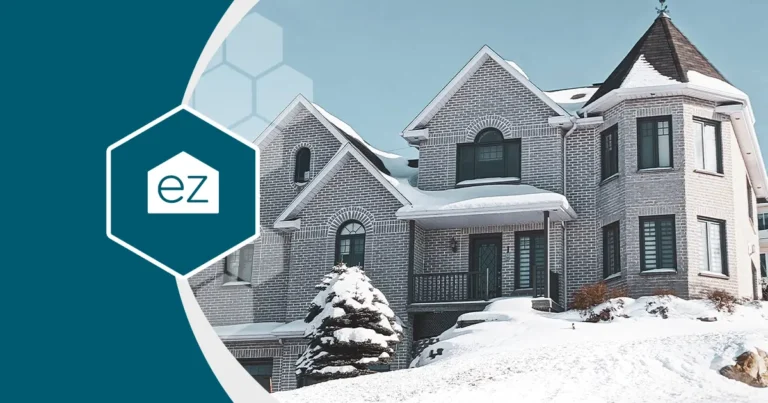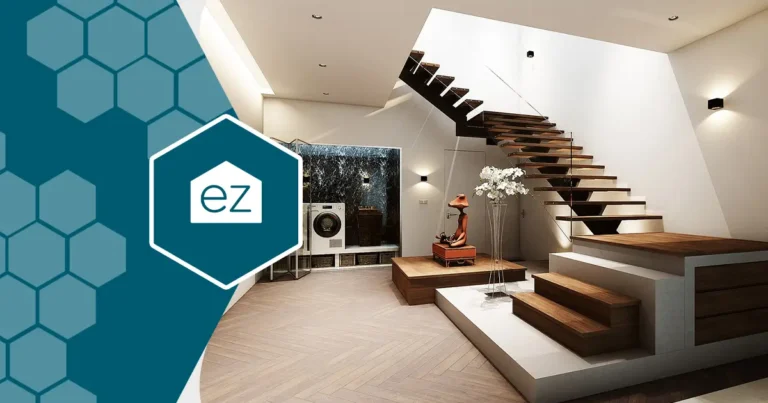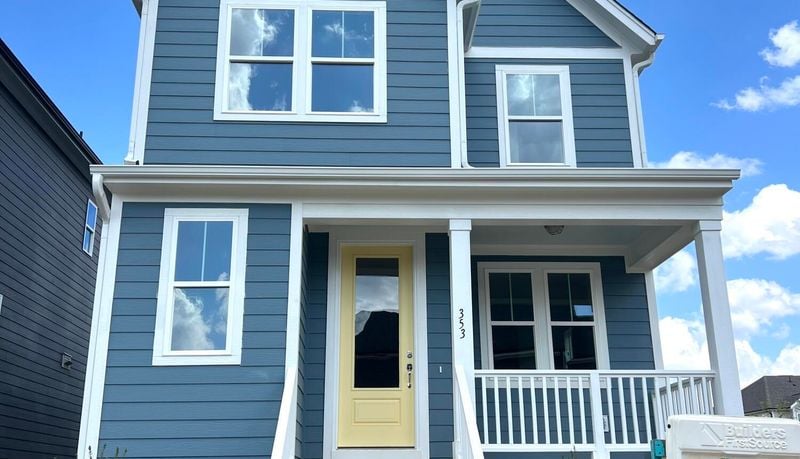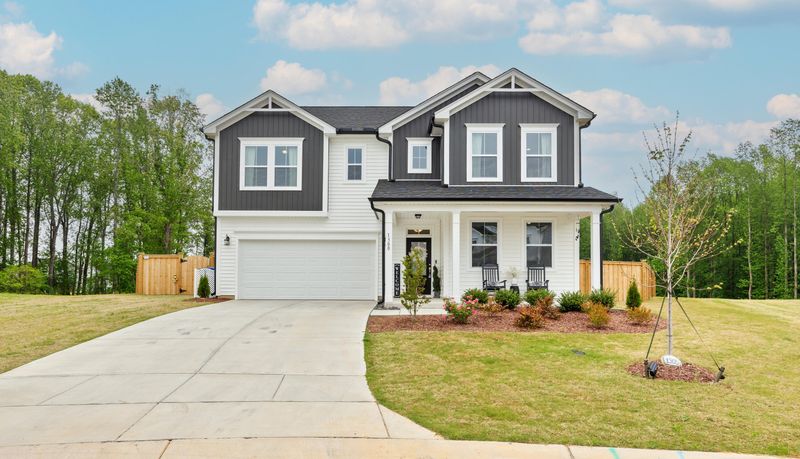Is a Multigenerational Home Right for You?

Multigenerational living has been gaining traction as a viable housing alternative. The market’s affordability challenges are occurring at the same time healthcare costs are skyrocketing. As baby boomers reach retirement, interest in multigenerational homes will likely increase. Families see it as a way to affordably care for aging parents while providing all the space and privacy desired by all.
Here’s what to consider when weighing purchasing a multigenerational home.
What is a multigenerational home?
A multigenerational home differs from a multifamily home in that several generations of a family, such as grandparents, parents, and children, live under one roof. That doesn’t necessarily mean it’s not a multifamily home. Some families buy duplexes, with the generations living on different sides.
But it’s not exclusively this kind of arrangement. It could be grandma lives in one of the bedrooms of a single-family home, or the adult children have converted the basement into an apartment unit they live in.
By March 2021, nearly 60 million Americans lived in multigenerational homes, representing 18% of the population. Part of that numerical boost has been from young adults living longer in their parents’ home. Various reasons are keeping adult children under the roof, like lack of housing and challenges to saving for a down payment.
What does a multigenerational living look like?

Today’s multigenerational homes take on many forms. You’ve likely heard the term “mother-in-law” suite; while that’s one example of a home that can accommodate multiple generations, it could be:
- A purpose-built multifamily property such as a duplex or side-by-side townhome where each generation gets an individual unit
- A separate, smaller home built on a larger lot
- An outbuilding such as a garage converted fully or partially into a living unit
- An add-on to an existing single-family home built with a separate entrance
- A garage, basement, or flex space converted to a separate living unit
- A purpose-built custom home divided into living “units” or wings, with a common area and an attached apartment or second living space.
As you can see, multigenerational homes are highly varied, and that’s because no two families have the same needs or financial situation. Where families with older parents might prize accessibility features, another with young adults may prefer privacy.
While this living arrangement offers several advantages, it may not suit everyone. Look at the pros and cons of multigenerational living to help you determine if it’s the right choice for you and your family.
Pros of Multigenerational Living:
Shared expenses
Life isn’t getting any cheaper, and it certainly doesn’t as we age and healthcare expenses increase. The most significant benefit of multigenerational living is the potential for dividing costs.
By pooling their financial resources, families often afford larger and more comfortable homes than they would individually. According to the National Association of Realtors, in 2022, 15% of first-time buyers were part of a multigenerational home purchase.
This can lead to significant rent or mortgage payments, utilities, and grocery cost savings. With the right financial agreement, all the generations reduce the burden of property taxes, homeowner’s insurance, and mortgage payments. That increases income for other things, like paying off student loan debts or travel in retirement.
Emotional support

There’s a saying that no one has your back like family. Having multiple generations under one roof increases the emotional support and companionship for those aging in place. Grandparents can help care for young children, reducing the burden of childcare on hardworking professionals. That’s especially beneficial for single parents who could use additional support raising their children.
And older family members may benefit from being so close to younger generations, reducing feelings of loneliness and isolation. Studies have shown that older adults living in multigenerational households tend to live longer, as they’re more active and engaged with people.
It also provides peace of mind for all, knowing that someone is right there should something happen, whether a parent has a work emergency and will be late picking up the kids or an aging parent needs medical help.
Shared responsibilities
Homeowners often cite maintenance as one of the drawbacks of homeownership. Multigenerational households divide and conquer household chores and caregiving responsibilities, reducing the burden on any one individual. Having extra hands to mow the lawn or cook dinner leads to a more balanced and manageable family life.
Cultural traditions

Having grandparents, parents, and children under one roof is the norm in some cultures worldwide. For immigrant families, continuing that pattern of multigenerational living helps preserve cultural traditions and values. Younger generations learn their language, customs, and family history from their elders. It ties everyone together and enhances those vital familial bonds.
Cons of Multigenerational Living:
Privacy concerns
Giving everyone the right amount of space and privacy is the primary challenge of multigenerational living. Not everyone recharges by being around others, or they may not want everyone to know what they’re doing every moment of the day. Sharing living spaces limits personal space and quiet time, leading to potential conflicts and stress.
For older adults moving in with young children, it may sound great to have access to their grandchildren. But they likely have forgotten how noisy and busy a household can be with little ones running around.
Space constraints

Multigenerational living may require a larger living space. Even though pooling resources increases buying power, it still may be too expensive or impractical in some areas. Finding a suitable home that comfortably accommodates everyone’s wants and desires for their space can be a significant hurdle.
Specific needs may further hamper the required space. For instance, if a family member has mobility issues and needs wider pathways or an accessible bathroom, that changes the layout or square footage. Retrofits can be costly.
Differing lifestyles
Different generations may have contrasting lifestyles, schedules, and preferences. These differences can lead to conflicts over issues like noise, cleanliness, and household rules. This gap is more apparent if someone must work night shifts or if young children must be in bed early for school. Young adults may prefer to stay out late while their parents have been in bed for hours.
Financial dependency

While shared expenses can be an advantage for buying power, they also create financial dependency among family members. Deciding how much each generational unit contributes financially to mortgage payments, utilities, or other costs opens the door to money conflicts.
This is especially true if one set makes significantly more money than another. That set may feel entitled to more space in the home. Or, the generation making less money may feel the larger income producers should pay more towards the expenses.
Be aware sharing a roof can lead to complicated financial arrangements. Potential conflicts over money can sow deep divisions in a family that may not be worth it.
Limited autonomy
Living with extended family members can sometimes limit your autonomy and decision-making regarding household matters. Balancing individual desires with the needs and wishes of the entire family can be challenging. That spans everything from what color to paint the living room walls to who must get home to let the dog out.
More work

The bigger the home, the more people and the more work there is to keep the ship moving smoothly. Think about it: how much more laundry will there be with six people versus four? How about meal prep in the kitchen or simply dusting and straightening around the home? Many hands make light work, but they also create more work regarding essential chores and maintenance.
Opting into multigenerational living
Ultimately, whether multigenerational living is right for you depends on your family’s unique circumstances, values, and preferences. It can be a rewarding experience that strengthens family bonds, provides support, and eases financial burdens. However, it also comes with challenges related to privacy and differing lifestyles.
Before deciding, consider your family’s dynamics, financial situation, and long-term goals. Open and honest communication among family members is essential to address concerns and establish ground rules for successful multigenerational living.
It’s wise to consult with a financial advisor or housing expert to explore your options. More home builders are providing purpose-built multigenerational homes with features like split wings, units with separate entrances, or mother-in-law suites. As with any big financial decision, take your time to weigh the benefits and drawbacks. Just know your options are there when you’re ready.
Start Your Home Search
Preston Guyton
Share this Post
Related Articles
Real Estate Tips
How to Communicate Your Value As A Real Estate Agent
Real Estate Tips
10 Essential Steps to Hiring a Contractor
Real Estate Tips
Why Perfection Squashes Your Real Estate Businesses
Real Estate Tips





